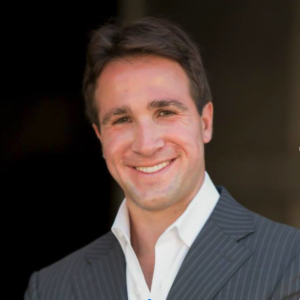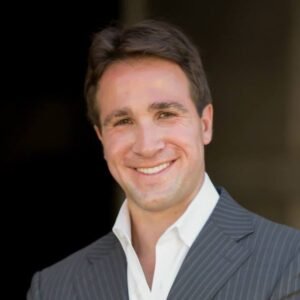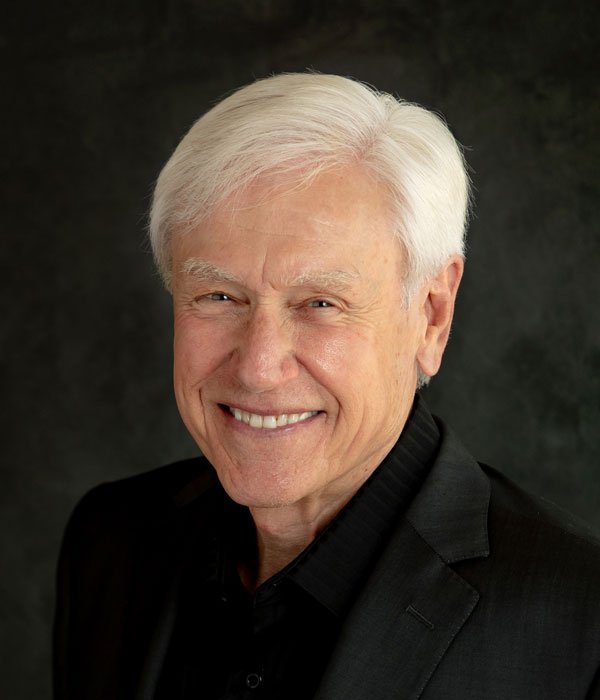I recently went one on one with Sam Aquillano. Sam is the Founder and Executive Director of Design Museum Everywhere, an online, nomadic museum with the mission of bringing the transformative power of design everywhere.
Adam: Thanks again for taking the time to share your advice. First things first, though, I am sure readers would love to learn more about you. How did you get here? What experiences, failures, setbacks or challenges have been most instrumental to your growth?
Sam: Thanks for having me!
Where to begin — my whole life I’ve been into design and creativity, I just didn’t know the vocabulary to describe what I was doing. When I was a kid, it was all about “ideas,” making my ideas real, and making money from my ideas. I started a bunch of small businesses when I was a kid, from selling baseball cards on the school bus, to selling mixtapes and CDs, to running a pretty successful lawn and landscaping business. So I’ve always had this love of creativity and ideas, and also this entrepreneurial fire inside me, that I think was all about being self-reliant and in control of my own destiny
When I learned about industrial design as a major and field, I instantly fell in love and went to Rochester Institute of Technology to study product design. There, not only did I get to hone my design craft, I also uncovered other elements that make me really happy – namely learning and community. I launched a student design community with some of my fellow classmates that still exists at RIT today, and I got into leadership roles in the industrial design professional development community, which extended into my career.
After college I landed a job at Bose, designing consumer electronics — pretty much my dream job designing products based on really high-end technology. I loved being there, and I learned a ton from my mentors — skills and insights I still use today. But I found that the most fulfilling things in my life weren’t coming from my job.. Six or seven years into that job, I sort of stopped learning at work, and I found the scratch to the other itches I had — learning, community — through what I was doing outside of work. After work, I was planning design conferences and teaching undergrad design students at night and getting my MBA. I think I realized that my dream job actually didn’t have the total package, and I didn’t want to settle.
Through all my work in design: as a corporate designer, an adjunct professor, and a design community builder, I found there was something dramatically lacking in everything I was doing. Design is ubiquitous, it helps shape our world, everything around us that isn’t nature is designed — and yet the conversations I was having about design were just among designers. No one was talking to the general public about design in a way that made it accessible and inclusive. It actually kind of made me mad at the time — that’s how I knew I was onto something. How could design claim to be human-centered when it sort of felt like an exclusive club, and you had to be in the know to engage with it?
So I had the idea for Design Museum Everywhere — sort of like a science museum, but a design museum. You don’t need to be a scientist to go to a science museum. That’s kind of the point. You go to a science museum to learn about science in an accessible and hopefully fun way. I wanted to make a design museum where you didn’t have to be a designer to engage and enjoy the programs and experiences.
I had this idea in 2007 and it rattled around my brain till I decided to do something about it in 2009. This was the Great Recession, probably the worst time to start a new nonprofit museum. In fact, many new museum projects in Boston and around the country were going on hold or being canceled because of the lack of capital in the economy. My co-founder and I could have hung it up, but we had this idea. With my business hat on, I thought about the biggest expenses for a museum: the facility and the marketing to get people to come to the facility. My co-founder had been thinking a lot about pop-up retail experiences. Together we had this notion of a pop-up or nomadic museum — that could pop up where people already go, places like galleries, retail environments, public spaces, outside. We didn’t need our own space, there were spaces all over the city! So we launched the Design Museum and our slogan: design is everywhere, so are we.
Adam: What are the best leadership lessons you have learned from leading a non-profit organization? What are your best tips for fellow leaders of non-profit organizations?
Sam: Leading a nonprofit means leading an organization in — let’s face it — a broken sector of our economy. There are a lot of things wrong with the nonprofit sector. I recommend watching Dan Pallotta’s TED talk: The way we think about charity is dead wrong. We can each do our part to change the sector, but I’ve learned a few things along the way. I think a key lesson is not to do work for free. We are mission-focused, and man, the people in my organization and in so many organizations believe in our missions — we’ve all made huge sacrifices to work on these missions. So it can be very easy to slip into, “well, we just have to do this work, regardless of the funding,” but that leads to a bad place. Every project needs to be funded. It sounds silly to say if you’re reading this from a for-profit standpoint, but it happens all the time in the nonprofit world. Folks don’t think about the financing these programs require and then get surprised when they can’t be sustained long-term.
The other lesson I’ve learned is focus — or I should say — I’m constantly learning this lesson. Especially at a place like Design Museum Everywhere, where the world of design is at our fingertips — we can do anything! Focus is the key. We have incredibly talented people on our team, on our Board, and in our Council — ideas are constantly swirling, but we can’t do it all. I constantly find that the scope of our programs and workstreams organically grows based on our ideas and ambition, which sometimes leads to amazing and exciting breakthroughs, but more often leads to burn-out. A key tip for leaders is to focus on their team, even if sometimes they may feel like the bad guy sacrificing awesome ideas on the altar of focus.
Adam: Given your work in the area, what are your best tips on how we can combat unconscious prejudice and bias?
Sam: Big question — this could be the whole interview. I can only share what I’ve learned and done in this space as a white, cisgender man, and the biggest tip is to listen to people of color with the intent to make change. That’s a simple sentence, the truth is it’s a life-long — generations-long — journey we all need to undertake. For me, it started by reading, learning, and listening to experts to try to better understand systemic racism. This has permeated many aspects of my life, from who I follow on social media, to the books I read, the podcasts I listen to, etc, etc. You have to open your mind up to the centuries of pain our society has — and continues to — inflict on the BIPOC community. And then, of course, take some action.
What I’ve done is start by making a transparent, inclusive organization where we value different perspectives and ideas. In practice what does this look like? One example, we have salary transparency — so everyone on the team knows what everyone else makes, all based on industry data. So it doesn’t matter if you’re black, white, male, female, non-binary, or trans, your salary is based on data, and it’s there for all to see. Sunlight is the best disinfectant — the data doesn’t hide. We also completely revamped our hiring process to reduce bias, boost objectivity, and put premium value on lived experience that is different from what is already represented on the team. We completely eliminated referral hiring, also known as, hiring your friends and close connections.
The last thing I’ll mention, and maybe this is unique to the Design Museum, but I feel every organization can do something: we’ve done projects to elevate and celebrate BIPOC designers, we’ve created programs that help us build community beyond simply white designers. Our transparency, action, and authenticity have built a lot of trust, and that’s so important. I value it so much. This journey is going to look different for everyone, but please seek out the experts and start down the path — this is our collective forever project.
Adam: In your experience, what are the defining qualities of an effective leader? How can leaders and aspiring leaders take their leadership skills to the next level?
Sam: I think a leader is someone who isn’t afraid of or above doing the work — that might be an unpopular, unscalable notion, but that’s where I’ve found success. A leader needs to be aware of the struggles and successes of each team member and be of service, to help, build capacity, give advice, and guide. So I think a leader must constantly be learning and engaging in every part of the business. I’ve found listening is key, to everyone, from my most entry-level employee to the Chair of our Board of Directors. And again, just like before, listening with the intention to take action. A leader recognizes their power and uses it for good, for building an equitable organization.
Adam: What are your three best tips applicable to entrepreneurs, executives and civic leaders?
Sam: Love this question. Boiling it down I’d say the following: (1) find co-founders, partners, unconditional supporters — if you can’t sell your vision and recruit at least one other person to go on the journey, how are you going to convince thousands to engage with your venture or initiative? (2) Ask questions, distribute your ignorance to as many people as possible, and allow them to inform your actions — I know people wonder how I make these decisions that lead to successful outcomes, the secret: I listen to about 70 people across our staff, Board, and Council, constantly. (3) Build a community. This will be the new competitive advantage for any business, organization, or venture — can be small, big, or huge, but it takes a village, and you’re going to need all the hope you can get from the true believers.
Adam: What is your best advice on building, leading and managing teams?
Sam: Building our team is my single most important responsibility. In addition to creating an equitable hiring process, I’m always looking for people who have the spark of belief in our mission. If they’re just looking for a job, Design Museum Everywhere is not the place for them — the sector just doesn’t allow for apathy. Everyone on my team cares deeply about the mission and about what we do for our audience. We recently went through 3 full rounds of reviewing hundreds of resumes, screener interviews, second interviews, etc, until we found the right candidate. The point is we took our time to find someone that has the qualifications and cares deeply about the mission.
My advice on managing comes from something I’m doing right now, which is building the operating system within which the work of the organization happens. Currently — and I’m sure this is the case for many organizations — there are about 10 different operating systems going on at once. This creates a lot of mental friction for me and the team. We need to be on the same system, from how we run meetings, to how we set and document goals, etc, etc. I’m incredibly excited about what systematizing our work can do for us as a team.
Adam: What is the single best piece of advice you have ever received?
Sam: It came from one of our past board members, Scott Reilly. I started Design Museum Everywhere because I love creating experiences for people where they can learn and engage with a vibrant, inclusive design community. But as Scott advised — I had to transform myself from an experienced designer to a fundraiser. He told me that if I wanted the Design Museum to thrive, I had to be the head of revenue. He was right, and I transformed myself into a fundraiser and never looked back. Now I take pride in the amazing experience my team produces and in the joy I see from our funders when they know their support is making a difference in the world.
Adam: What should everyone do to pay it forward?
Sam: Mentor and don’t be afraid to give tough love when necessary!









